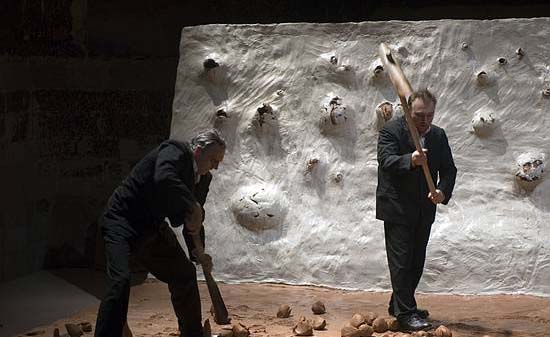|
Alexis Jakubowicz (b. 1986 in Lyon) is a French art critic who has been a regular contributor to Libération and Art Press since 2009. He also happened to visit Nepal last month as the final stage in his 7-month trip around South America and South East Asia. He came to see me at my residency studio and we chatted about his trip, my work, what Nepali art is up to and Miquel Barceló. (He recently interviewed Barceló and saw a parallel with my work and my interest in materiality. Needless to say, I rather liked Alexis.) He also gave a talk at Siddhartha Art Gallery titled '200 days away from home: being an art critic in a global village'. After meeting artists, curators and dealers in 11 countries (Perú, Bolivia, Chile, Cambodia, Lao, Vietnam, etc.) he came back with a sense that the Western art world cannot afford to ignore what's going on in so many countries. The future centres of the art world, he said, will be in the South. Places like Sao Paulo, Dubai, Singapore, Mumbai or Mexico will take over from New York. Going through his slides, which showed selected (and exciting) art pieces and art practices from the countries he visited, he built a strong case against the uninformed Western dismissal of the developments in those areas of the world. "Cambodia? There's nothing going on there." Not so. The narrow Western European and American horizon leaves all these up-and-coming future capitals for the arts out, and us out from them. That's exactly how Albertine De Galbert, a friend of Alexis's and also a French art critic, felt after visiting many Latin American countries and realising the strength of the art produced there and the lack of connection between practitioners from neighbouring countries. As a response, she started an online resource called artesur.org that does just that: connect the Latin American art world. Or as they put it "to guide art lovers and professionals into the multitude of artistic ways, techniques, events, and exhibition spaces of this region." Alexis's talk clearly resonated with the local art crowd that came to listen to him. Art fairs and biennials in Mumbai, Dubai or China feel closer and more relevant to them than the Western biennials. The challenge for them, though, may be how to develop a local language that counters the effects of economic globalization, always ready to flatten cultural differences and favour recognisable, copycat aesthetic approaches.
0 Comments
Your comment will be posted after it is approved.
Leave a Reply. |
Robert Cervera Amblar
Sculpture, installation, writing. Archive:
July 2013
|


 RSS Feed
RSS Feed